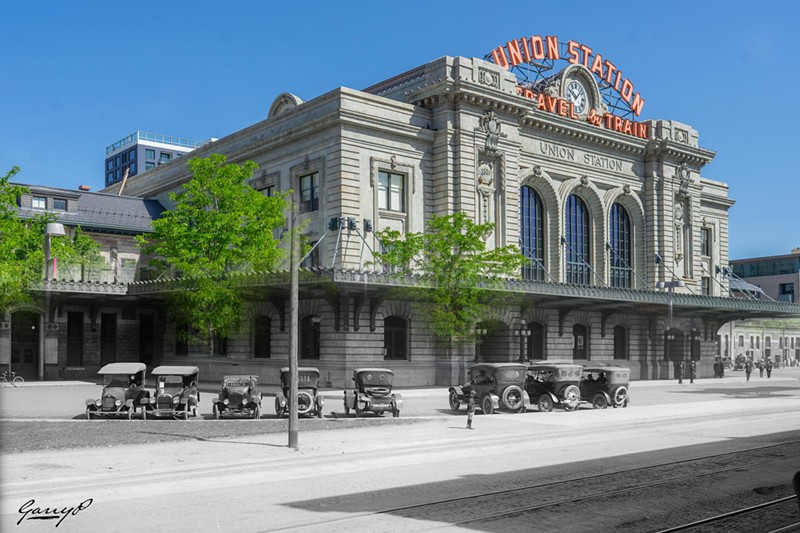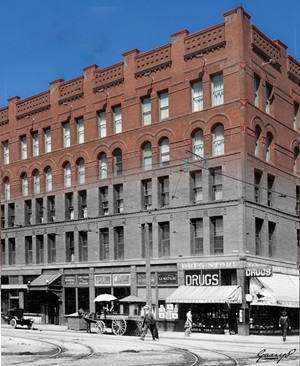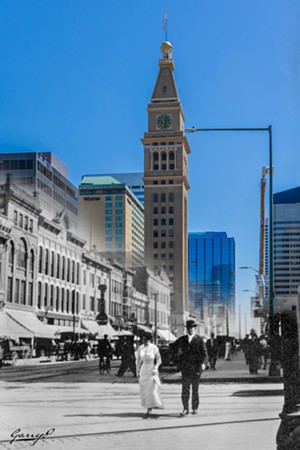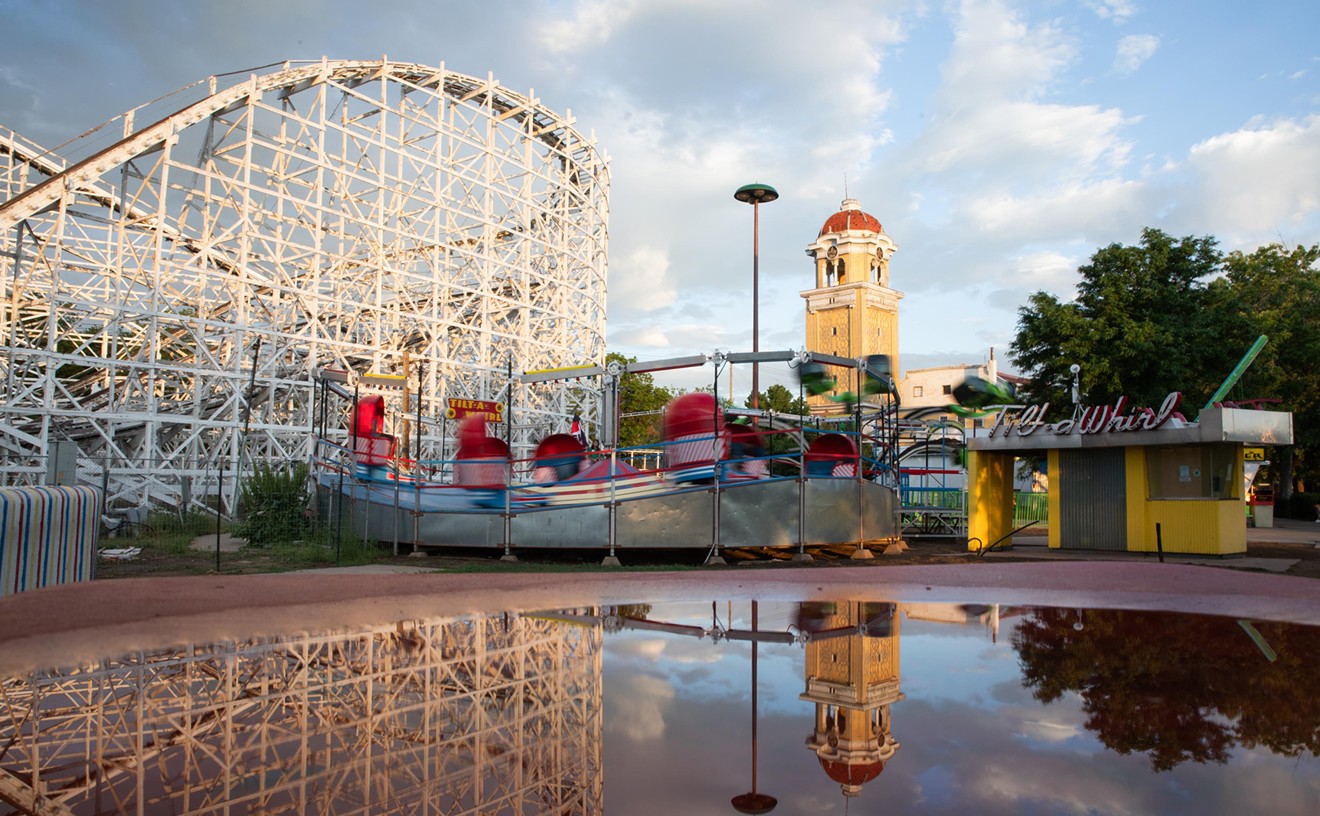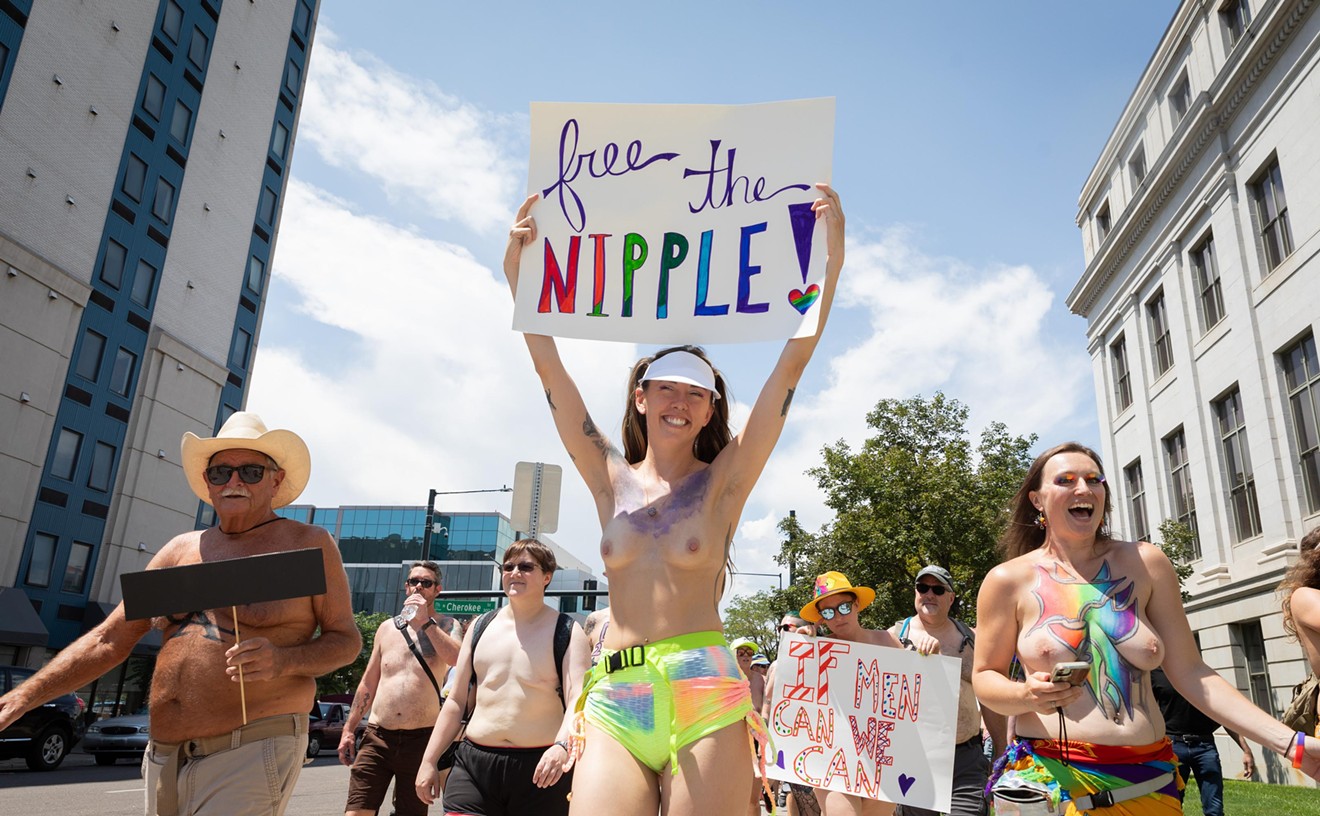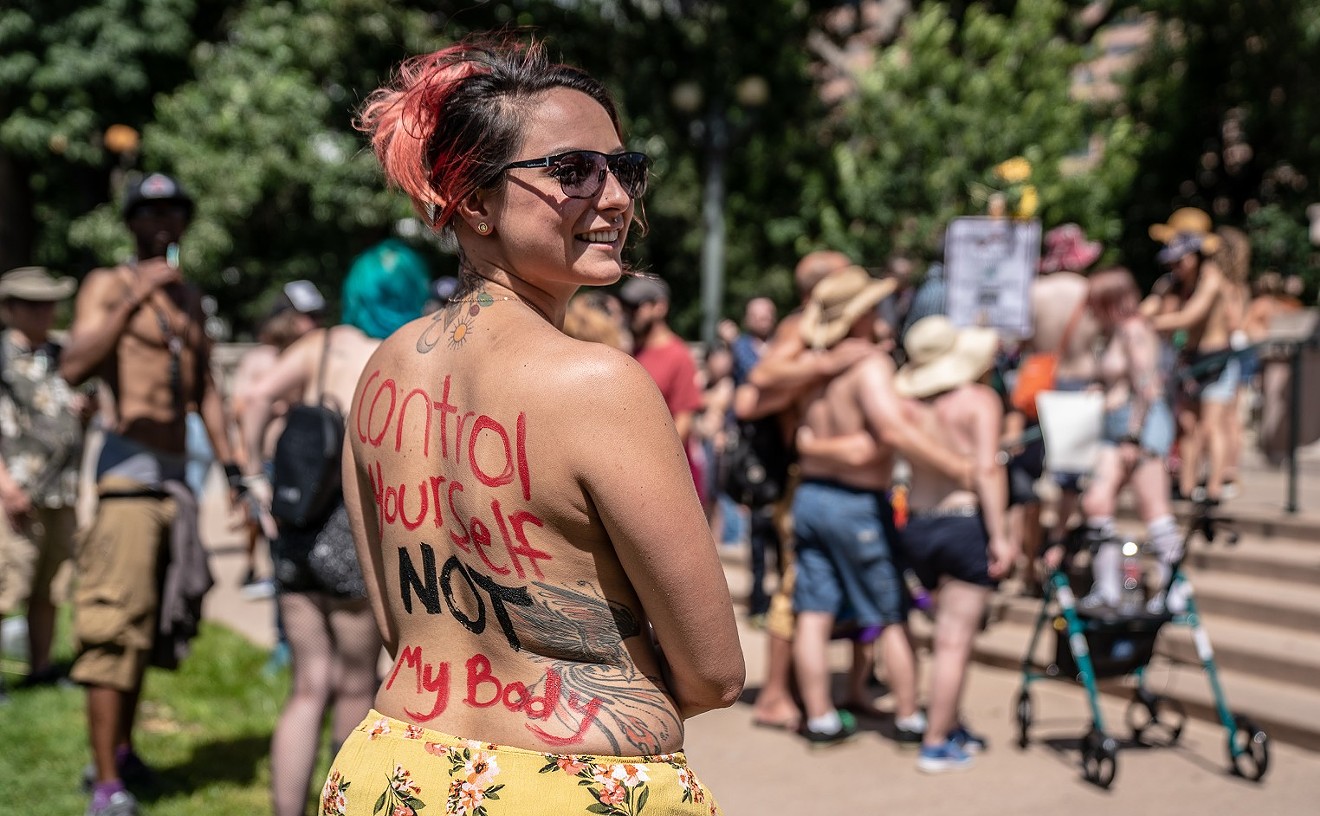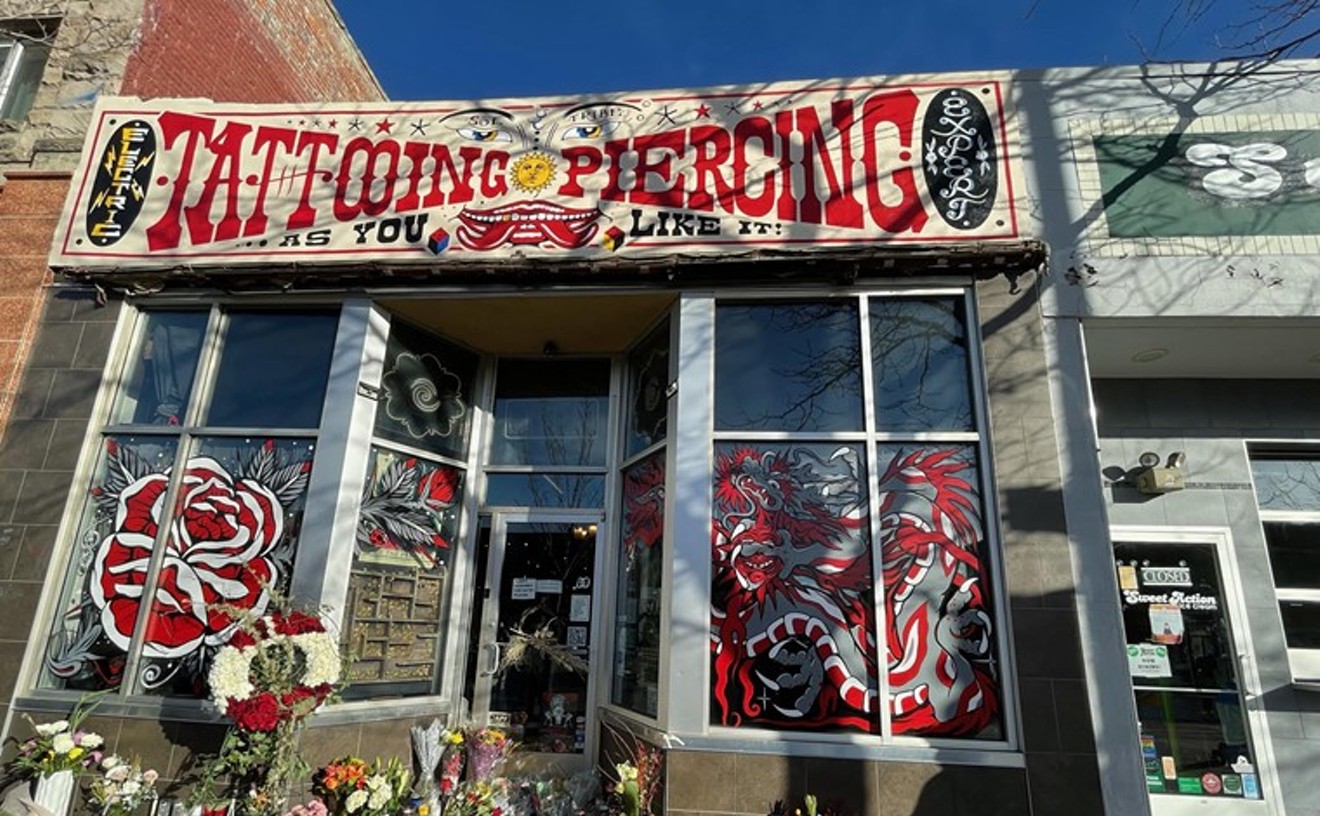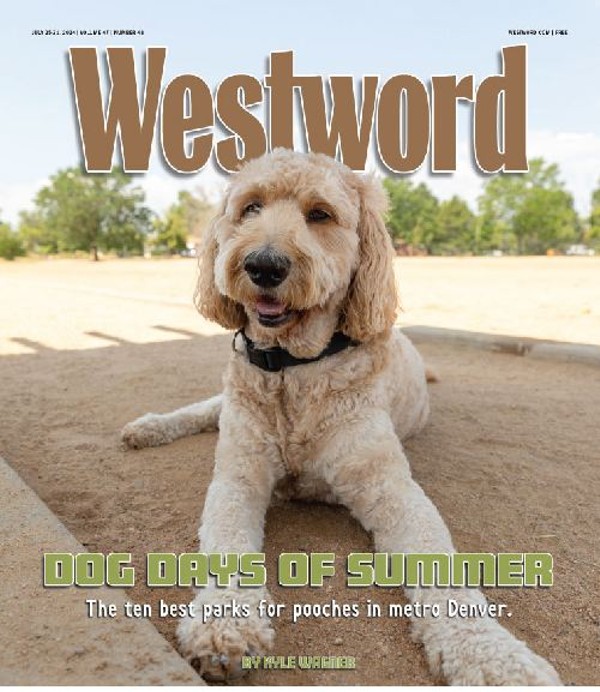Pycroft is a native of Manchester, England, but now lives in the French Alps, about thirty minutes from Geneva, Switzerland. By day, he works in the semiconductor industry, but his favorite hobby is photography.
After decades of traditional landscape photography, however, he found himself getting tired of taking shots of mountains and street life. That's when a friend in San Francisco showed him a "past-to-present" image of the city that blended two images — one from today and one from about 100 years ago — into one, capturing the passage of time. Since that moment, Pycroft has been hooked on what he calls rephotography.
Today, he primarily rephotographs cities and towns in the Alps, but he's traveled across Europe and the United States in pursuit of his new type of photography.
In May, he made his first visit to Denver. One of his favorite rephotography subjects was Union Station.
The original depot opened in June 1881, a dozen years after the first railroad came to Denver. Thirteen years later it was destroyed by fire, and was replaced in 1894 with a station in the Romanesque Revival style. That, in turn, gave way to the elegant Denver Union Depot in 1914. It was the hub of "Travel by Train" action in the Rocky Mountain West, but fell into disrepair in the ’80s.
In 2001, the metro area adopted a plan to create a multi-modal transportation center at Union Station, where bus, light rail and heavy rail routes would connect. The contract for the renovation of the station went to the Union Station Alliance, which turned the terminal's central area into the Great Hall, billed as "Denver's living room," and also created a hotel on the upper floors named after Dana Crawford, the development pioneer who was an integral part of the team. The renovated facility debuted in July 2014 — exactly one hundred years after the building first opened its doors.
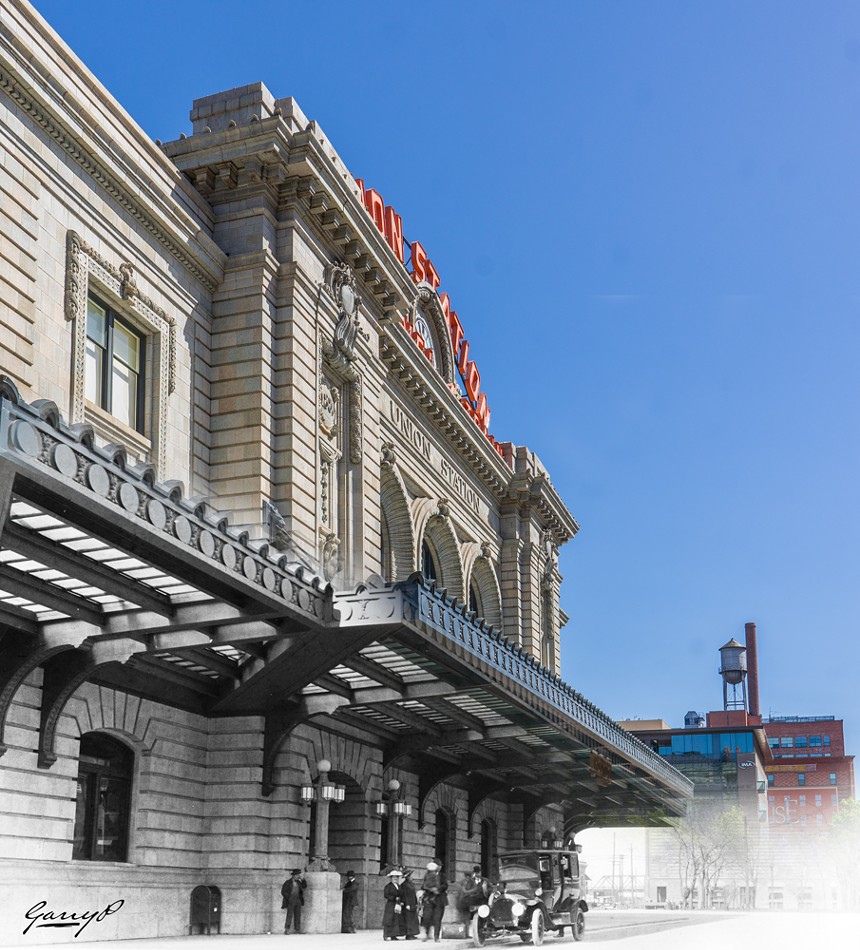
The Union Station terminal building has served Denver since 1914, as seen in this blend of old and new photos.
Garry Pycroft
Although Pycroft didn't stay at the Crawford in May, he had half a day to explore and photograph the city. After he returned to France, he sent some of his rephotographs to Westword; we reached out to talk about his rephotography and time in Denver.
Westword: Tell us about yourself and how your photography journey began.
Garry Pycroft: I am from Manchester, England, and I traveled around a lot as a young guy. I was in the Navy, which allowed me to — this was the Merchant Navy, not the Royal Navy, not the military — travel the world. And I think I just got the bug for traveling. And yeah, there was just never enough. I just couldn't do enough traveling.
I then left the Navy and moved into the semiconductor industry as an engineer when I joined a U.S. company based in Chandler, Arizona. They then asked me to move to France, which became their European headquarters, so I moved to what I consider one of the most beautiful places on the planet, the French Alps. A few years later, my company asked me to move from the French headquarters to the corporate headquarters, and I ended up moving to San Jose and lived there for thirteen years. I got to travel around the U.S. a lot. I did the entire West Coast of the States, driving from the border with Mexico all the way up to Vancouver.
Going hand in hand with traveling is photography.
I always had my camera at my side. I came back to France five, six years ago. My wife is French; all of our family lives over here in Europe. I've got family in England, family in France, and we were starting to see grandchildren coming along, so we just decided it was time to leave the U.S. and come back home. I was forever up in the mountains with my camera.
But I have to say, I was struggling with my photography there, because honestly, it's just too easy to take amazing photographs up in the mountains. You know, my wife would go up there with her smartphone, and I would have my backpack with my camera, numerous lenses, my tripod, etc., and she would come back with better photographs than me. I just wasn't satisfied with my photographic journey.
A friend of mine in San Francisco sent me a photograph of what I call the past with the present: a photograph taken in San Francisco, where it was a combination of the city a hundred years ago with the city as it was today. And instantly, I knew that was the path that I wanted to go down.
What was it about that initial old-to-new photo that captivated you?
That is a really good question. And I think the question I get asked most is: What inspires me? Why do I do it? I'm not sure I have fully answered it myself. I think all of us have some degree of nostalgia.
I think the majority of my images in Denver were from about 100 years ago. Here in France, I go back into the nineteenth century and a period called La Belle Époque. It was a period of beauty, right around the start of the Industrial Revolution. There was so much hope, optimism. There was so much beauty in those that had a certain amount of money. The women were dressed beautifully, very feminine, and the men were dressed with style, with elegance, and I really love that.
With my images, what I feel — and what so many other people say — is that because I am blending the past with the present by introducing color, it gives people a path into the past. And they can connect with those people in the past. When I finish the image, I spend so much time looking at the image, particularly the people in the image. I start to ask myself, 'How was their life? Did they make it through World War One? World War Two?' I find myself connecting with the people in those images.
The majority of my images that I completed of Denver, I tried to show the areas of town where there has been little change. So, take Union Station: You see Union Station as it was and as it is. If there's been so much change — and within Denver, there's a significant amount of the city that has changed dramatically over the last fifty, sixty years — I can't do my images, because I can't connect. There's a discrepancy that stops me and other people from being able to connect to the life that we see there.
How do you find the images that you choose to rephotograph?
Step one is, I go onto Facebook and I find groups associated with Denver (or wherever I am photographing). I will then reach out to the members of those groups and ask what historic buildings are still around. They will give me suggestions, and in the case of Denver, they pointed me in the direction of Denver Public Library.
I approached the library, and they gave me some advice but also said, "We've got a huge archive of photographs" — nearly 100,000. Once I identified the old buildings that remain, I go on Google Maps street view to see if that building is worth a visit. Many times, I'll find that the building still exists, but there are trees planted in front of it. If the photo is not able to be rephotographed, I move on to the next location.
After my research, I came away with about thirty photographs that I wanted to rephoto. I then load those images onto my tablet and organize my tour so that I have an efficient walking tour of Denver.
After you shoot the images and color-correct them, how do you blend them together?
The first thing I need to do is to go through the alignment process. I bring both the original image and the one I shot into Photoshop as individual layers. I then make it so that I can see both images on top of each other, and from that, I can go through and make sure the walls are aligned and the scale is correct. I can expand, contract, transform the images in any way necessary for them to match.
Once I'm satisfied with the alignment, I'll go through the masking process and decide which part of the original image and which part of my image I want to include. Invariably, the bottom half of the final product is the past image, because that's where the old vehicles are, that's where the old shops are. The upper half is where we have the more beautiful colors; we have the sky, maybe some trees. I want to take full advantage of the color there.
In one of my YouTube videos, I talk about the fourteen-step process to creating these images. From finding the towns and finding the old images to what to do while you're in town, and finally, how to go through the alignment when you're back at home.
Do you present your images anywhere?
I started sharing my images on Facebook and Instagram, and I was asked if I wanted to participate in some of the small local exhibitions. And I thought, 'Okay, you know, let's do that.' I was then approached by some of the towns around here saying, 'Hey, we would really like you to present your work and show off our town.'
I'm sure your readers have heard of Évian-les-Bains, France — known for the mineral water. That is one of my local towns. I did an exhibition there with around 25 of my images purely of Évian. There's another town that is halfway between Geneva and Chamonix where about twenty of my images were displayed. ... I've just started another exhibition in a town called Megève, which is a big ski resort here in the Alps. There are 32 of my images distributed around the town.
Little by little, my style of images is starting to get recognized locally. Now, wherever I go, I take with me a selection of images that I want to rephotograph to grow my presence.
What are your thoughts on Denver after your time here?
I loved going around, and I wish I had more time. I must have walked about twelve miles that day.
What [photography] does is it introduces you to things, locations that otherwise you probably wouldn't go to. You know, some of the locations were probably not on the "twelve things you have to do in Denver" list. Like walking down Larimer Street — it is full of buildings from the early twentieth century. I wouldn't have seen those if I didn't have the old photographs.
The city has unfortunately lost some wonderful buildings that existed, to permit the growth that most principal cities have seen. There still, however, remain some wonderful buildings to explore, and I would have liked to have spent more time, for example, in the railway station.
Maybe it exists and I didn't see it, but there didn't seem to be a lot of recognition of the history of the city: My images, for example, show how that history remains, and I feel that they encourage people to look further into where the city has come from. If the city has interest, I would welcome discussing how we could collaborate on such a project displaying my rephotography of Denver.
This interview has been edited for length and clarity; learn more about rephotography at voyageurdupasse.com.

